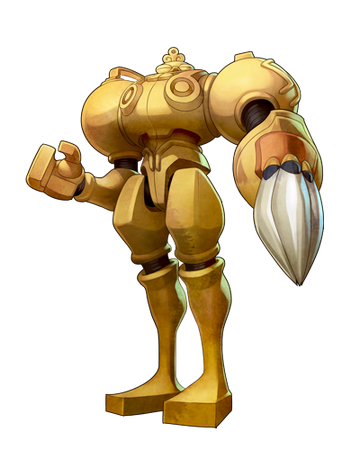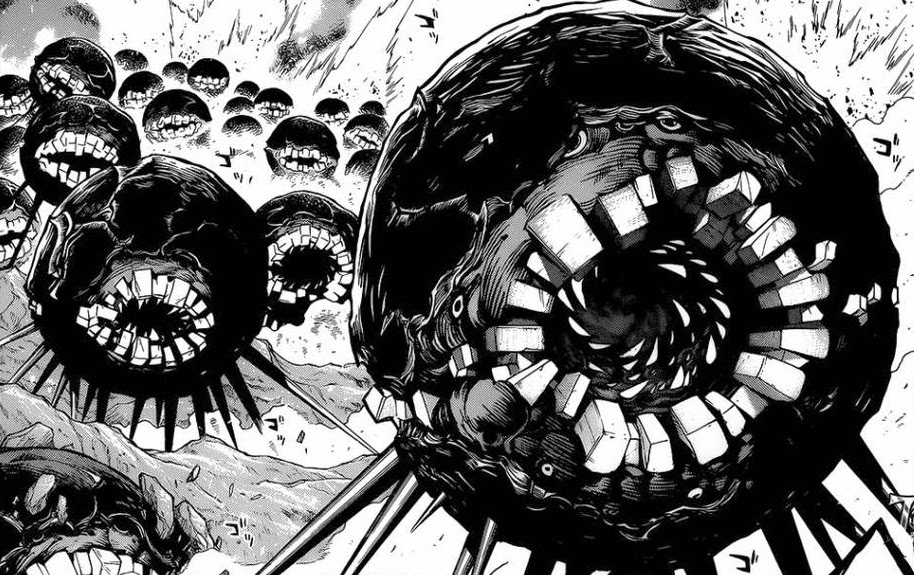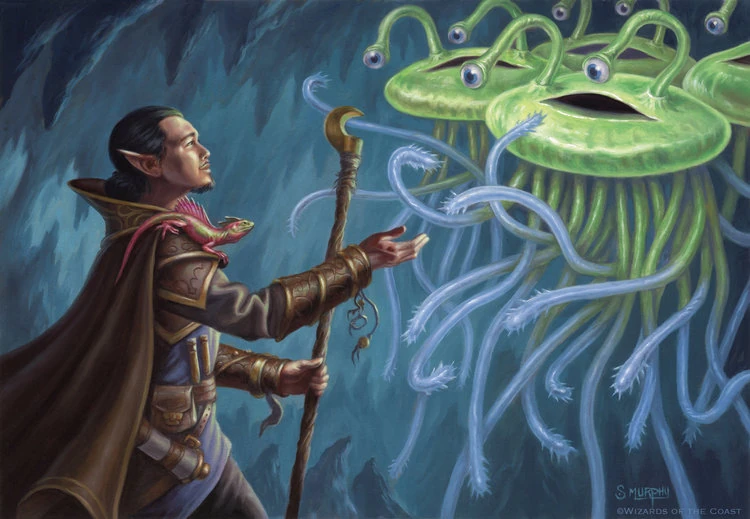The School of Simulacra is a specialized form of illusion magic that creates Turing-complete illusions, which are constructs of pure thought and will capable of independent action and even casting spells. Practitioners of this school use a Gaes-based control system to compile and cast spells, which can be sequenced into a simulated version of almost any evocation, conjuration, transmutation, or other magical effect.
The most advanced members of the academy have woven a vast network of these illusions, called the Anima Mundi, which is overlaid onto the world like a waking dream. To maintain this immense system, they have created Daemons, a caste of Thinking Illusions that act as guardians and administrators. Practitioners of this school, the Simulacrists, represent themselves with Glamour Avatars, often fantastical or idealized forms which enhance their connection to the Anima Mundi.
The most advanced members of the academy have woven a vast network of these illusions, called the Anima Mundi, which is overlaid onto the world like a waking dream. To maintain this immense system, they have created Daemons, a caste of Thinking Illusions that act as guardians and administrators. Practitioners of this school, the Simulacrists, represent themselves with Glamour Avatars, often fantastical or idealized forms which enhance their connection to the Anima Mundi.
This idea was loosely inspired by Gus from Owl House. They never fully explored it, but there was an early episode where either it was implied, or maybe I just inferred, that illusion magic operated programmatically, and I ran with it.
Simulacrist (Old School Essentials)
- Prime Requisite: Intelligence (INT)
- Hit Dice: d4
- Armour: None
- Weapons: Dagger, Staff
- Saving Throws: As Magic-User
- XP to Level 2: 2,500
Class Abilities
Simulacrum Construction: A Simulacrist does not cast spells directly. Instead, they expend a spell slot to construct a Simulacrum, a complex illusion Gaesed with a specific purpose. A Simulacrist can have a number of Simulacra active at a time equal to their level. A Simulacrum takes one full round to construct and does not act on the turn it is created. It acts on the Simulacrist's next turn and on subsequent turns until its purpose is fulfilled or it is dispelled. The effects are as follows:
- 1st-Level Spell Slot: A Simulacrist can create a Tier 1 Simulacrum. This is a simple construct capable of performing a single, autonomous action. For example, a Distracting Phantom can be Gaesed to appear and attack a foe, giving an ally a +2 bonus on their next attack roll against that foe. After performing its one action, the Simulacrum vanishes.
- 2nd-Level Spell Slot: A Simulacrist can use this slot to access the Anima Mundi, the collective network of Simulacra. When they do, they create a small, ephemeral Simulacrum that acts as a sensor, allowing them to relay a message to or receive a single piece of abstract information from a location they have previously visited within one mile.
- 3rd-Level Spell Slot: A Simulacrist can construct a Tier 3 Simulacrum, which can be Gaesed at a sufficient degree of complexity to cast real magic, a single spell from the Magic-User spell list (up to 2nd level). The Simulacrist must still provide any necessary spell components to the Simulacrum in order to cast the spell.
Glamour Avatar: At 1st level, a Simulacrist learns to project a Glamour Avatar of their idealized form. Once per day for up to 10 minutes they can alter their Glamour Avatar to enhance their connection to the Anima Mundi, granting a +2 bonus to their attack rolls with Simulacra and on all Saving Throws, or instead for the purpose of camouflage or as a disguise, without expending a spell slot.
Daemon Code: At 5th level, the Simulacrist can make a single Simulacrum permanent by spending one day and 100gp per level of the Simulacrum. This new Daemon can perform a simple, repetitive task, but it cannot cast spells.










